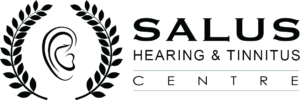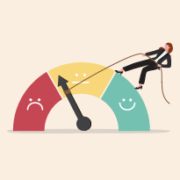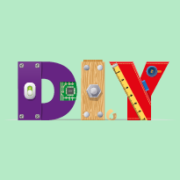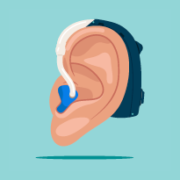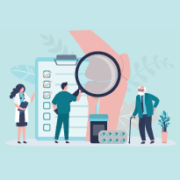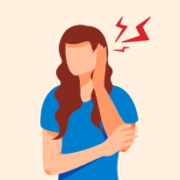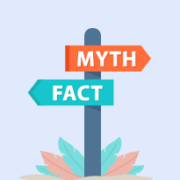Hope for Tomorrow, Solutions Today
About 14% of the world’s adults experience tinnitus: a persistent ringing in the ear (some people hear screeching, hissing, static, whooshing, roaring, or even sounds like ocean waves).
For many, the condition becomes debilitating. As of right now, there’s no known cure.
But science is always working on new ways to fight back. First, a quick refresher on tinnitus. Then we’ll dive in and check out some exciting developments in tinnitus research.
Now, off we go!
Tinnitus Basics
What is tinnitus?
Tinnitus sounds like a disease, but it’s not. That phantom noise only you can hear? It’s a symptom.
It means something else is going on, an underlying health problem. Tinnitus has been linked to many other health issues, and it can be hard to determine the exact cause, but the general consensus is tinnitus results from some sort of damage to your auditory system.
To explain:
When you hear, you are actually experiencing the result of a complex process of translation that begins with your outer ear and ends with your brain. It involves:
- Three distinct regions in your ear (which are filled with tiny, delicate structures)
- A very sophisticated bundle of nerves
- The hearing region of your brain
Each of these pieces of the process has their own complicated job to perform. It’s when something goes wrong at one of these steps that we experience issues like hearing loss — and tinnitus.
Is It “TIN-uh-tis” or “tin-EYE-tus”?
The internet offers plenty of answers to that question. You’ll discover that dictionaries disagree, language experts disagree, and medical experts disagree. Each with a more passionate, well-reasoned defense than the last.
How is anyone supposed to know the right answer?
As far as we’re concerned, you can pronounce “tinnitus” however you’d like. We just want to provide you with information what will help you get relief from your tinnitus.
Are there different kinds of tinnitus?
Tinnitus used to be classified as subjective or objective.
Subjective tinnitus was a sound that only you could hear. Objective tinnitus was a much rarer type of tinnitus — your provider could hear the sound in question.
But a growing number of providers have embraced a new approach:
- An internal sound arising from your auditory system is tinnitus
- An internal sound that doesn’t arise from your auditory system is a somatosound
A somatosound is a noise coming from inside your body, such as your heartbeat or a clicking jaw joint. In some cases, your provider can hear these noises when they examine your ear.
For example, if you hear a ringing noise, it’s probably due to damage in your auditory system, so it’s tinnitus.
If you hear a clicking noise, it probably arises from a jaw joint disorder (or something similar), so it’s a somatosound, not tinnitus.
How is tinnitus diagnosed?
Tinnitus is generally self-reported. In other words, your doctor or hearing professional has no way of knowing you have tinnitus unless you tell them — so it’s important to speak up if you think you may be experiencing it.
Your provider will try to determine an auditory cause, such as:
- Excessive noise exposure
- Medications harmful to the inner ear
- Wax buildup
They may also do an audiological evaluation. All of this helps them understand the situation and circumstances so hopefully they can treat it.
What are the options for treating tinnitus?
As already mentioned, there’s no cure for chronic tinnitus. But some people have successfully minimized its debilitating effects through a variety of methods, including:
- Sound therapy, which uses a tone or a pleasant sound, like ocean waves, to mask your tinnitus
- Habituation, in which a sound is matched to your unique tinnitus and played at a low level to help change your reaction to your tinnitus
- Hearing aids, which help with the hearing loss that most likely accompanies your tinnitus
- A combination of these — many hearing aids now have built-in tinnitus-treatment functionality
Though these methods only mitigate the effects of tinnitus, it’s good to remember that science is still on the case.
Exciting Tinnitus Developments
Is this the real cause of tinnitus?
There is currently no known origin for tinnitus, but the long-held assumption is it’s an issue with the auditory system.
Steven W. Cheung, M.D., and a team of University of California San Francisco researchers, however, are using advanced neuroimaging to better understand what drives the condition.
Dr. Cheung’s work over the last decade has led him to focus on one area that might be the culprit — the caudate nucleus, an area of the brain that isn’t part of the auditory system.
What is the caudate nucleus?
Among its other jobs, it serves as the logistics center for your senses.
It’s like a gate, blocking certain sensory perceptions from entering your brain’s neural network. It also allows other sensory perceptions through, processes them, and integrates them with the other information your brain takes in.
The caudate nucleus is supposed to block out phantom noises. Dr. Cheung suspects it isn’t doing that in people with tinnitus.
His 2020 study testing this hypothesis was encouraging. He used deep brain stimulation of the caudate nucleus and significantly reduced tinnitus symptoms in most of the study participants.
But why the differences? Why did some participants see relief, while others didn’t?
Follow-up studies helped Dr. Cheung realize that treatment efficacy depended on the neural networks around a person’s caudate nucleus.
In other words, the neural network around a person’s caudate nucleus is personalized to that person and responds differently — uniquely — to treatment such as the one provided by Dr. Cheung.
Cheung and his colleagues are at work on a study to further improve diagnostic methods and, hopefully, develop a less invasive tinnitus treatment.
Tinnitus and clinical trials
When standard treatments don’t work, cutting-edge research often presents the best hope. So why do so few tinnitus patients enroll in them? Relatedly, why do so many withdraw mid-trial?
A potential study by Power Life Sciences Inc., a company trying to remove barriers to successfully accessing clinical trials, will explore reasons people with tinnitus do or don’t participate in clinical trials, possibly yielding insights that might aid future investigations.
Virtual reality and tinnitus
There may also be help on the technological front. A 2016 study suggested that a virtual reality-based tinnitus treatment can be at least as effective as standard care.
An interesting French study slated to finish in spring 2024 looks to further validate those results.
Study participants each receive a “tinnitus avatar,” a sound closely matching their unique tinnitus sound.
During eight different sessions, the participant spends time freely wandering in a variety of 3D virtual environments that include environmental sounds.
They can hear their tinnitus avatar, but they can also see it as a sparkling spot. Using a wand, they can control their tinnitus avatar in the virtual environment, including masking it by moving closer to other sounds.
The researchers hope to show that by interacting with the tinnitus avatar as if it were a standard sound, patients can recalibrate their perception of tinnitus, decreasing its intrusiveness.
Plenty to Be Excited About
There is a lot to be hopeful about, between the studies, the integration of technology, and even just the basic understanding of how it functions.
And though science is hard at work on these developments, there are effective options for management available now.
If you have questions about tinnitus, or what management options might be available to you, drop us a line on our contact page.
